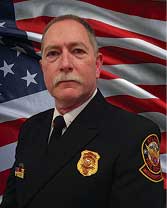Editor’s Opinion | By David Rhodes

The fire service has traditionally carried a vast array of ground ladders. The engine will typically have a 24- or 28-foot extension ladder, a 14-foot roof ladder, and a short or attic ladder of some sort. The truck, on the other hand, is loaded full of ground ladders. The standard requires a minimum of 115 feet of them. Departments choose a variety of extension ladders ranging from 24 to 50 feet, several straight or roof ladders that are 12 to 16 feet, combination ladders, attic ladders, step ladders, and a host of specialty utility ladders.
- Tactical Operational Tips in Laddering
- Ladder Placement Tips and Tricks: Moving Past Minimum Standards
- Firefighting Basics: Ladder Tip Positioning
All this equipment carried on apparatus is needed to provide rapid access to areas above or below grade. In addition to the initial ladder placed for access, it is common practice to place a ground ladder against each side when interior crews are operating at structure fires. These ladders are placed for egress, and having them staged before they are needed enables anyone in the area to quickly move them to accommodate a firefighter who needs to quickly exit while fleeing harm or making a rescue. I think we all agree that throwing ladders provides an extra level of preparedness and safety that often results in very successful outcomes.
In line with that philosophy, I am often dismayed at how often our organizations fail to provide or throw ladders to help us achieve career goals. It’s often dog-eat-dog and everyone for themselves, or the easy button is hit and we are directed to get certifications and education from elsewhere. Some feel that just requiring higher education solves the problem. Simply requiring a degree in just about anything before you promote never validates that you are proficient in the core competencies needed to succeed in each position. These requirements are often a crutch that perceivably transfers the need for an organization to do the heavy lifting of identifying the knowledge, skills, and abilities or competencies needed and then developing a plan on how to obtain and adequately assess them, do the in-depth planning and career-specific development, and have a competent training staff to implement it.
Clearly identifying the steps necessary to build the skills needed for advancement is the ground ladder of opportunity for setting members up for success. Simply requiring certain certifications and higher education is not the key component for ensuring our members’ competency. It can play a pivotal role in an overall strategy, but it cannot stand alone as a substitute for well-thought-out and proven specific organizational core competencies. Just as administering a 100-question multiple-choice test never reveals who your best officers are going to be, neither do these substitutes. We can’t lose sight of the fact that the job knowledge, skills, and abilities and the core competencies themselves are more important than where or how they are obtained.
Identifying core competencies can be painful. It requires deep analysis of each position, understanding every aspect of the job, and making tough decisions. It requires having articulate and competent individuals able to communicate the competencies so they are understood and recognized and can be documented and developed. Often, the process will uncover shortcomings within the structure of your organization. People will be scared when they discover they are lacking the critical core competencies for the job they are occupying. Throw them the same ground ladder so they can climb up and be successful. Give them a way to achieve and earn competency, but don’t leave the ladder on the truck!
A lack of understanding that core competencies are of the highest importance often leads organizations and individuals to failure. The goal should be to provide everyone with the opportunity to succeed unrestricted. That is real inclusivity! Some will take advantage of the opportunities, and some will not. The goal is to develop more highly qualified candidates than you have positions. This creates depth and loyalty in your organization. It screams out, “We are investing in you because we care about you and want you to be the best.” If we can bring our weakest links to a level of qualified or highly qualified, then we operate at optimal levels and aren’t worried about what shift is on duty, what officer is off, or who is first due. We deployed our ground ladders before they were needed.
Throwing ground ladders is a great metaphor for providing opportunity to everyone in your organization, allowing everyone to climb up the ranks and, equally important, providing escape routes when needed. Putting them up at the right heights and angles can eliminate bias, political, subjective, and a host of other detrimental decision-making practices. It will build trust, community, and effectiveness; eliminate stress; reduce addiction; and prevent many other organizational-induced mental health and cultural issues.
Maybe your organization doesn’t have the fortitude or resources to provide these ladders. You may have to throw the 24-foot or even the 35-foot alone. At a minimum, you can identify the core competencies and development needed for yourself to be the best. As an officer, you can identify them for your crew members. As a battalion chief, you can identify them for your officers to be the best. It will become contagious and eventually work its way up the line. Don’t rely on outside certifications and accept that higher education is providing your members with the skills they need. Don’t wait until you get inside to realize you need a ladder. Throw ladders more often, and take one with you every time!


